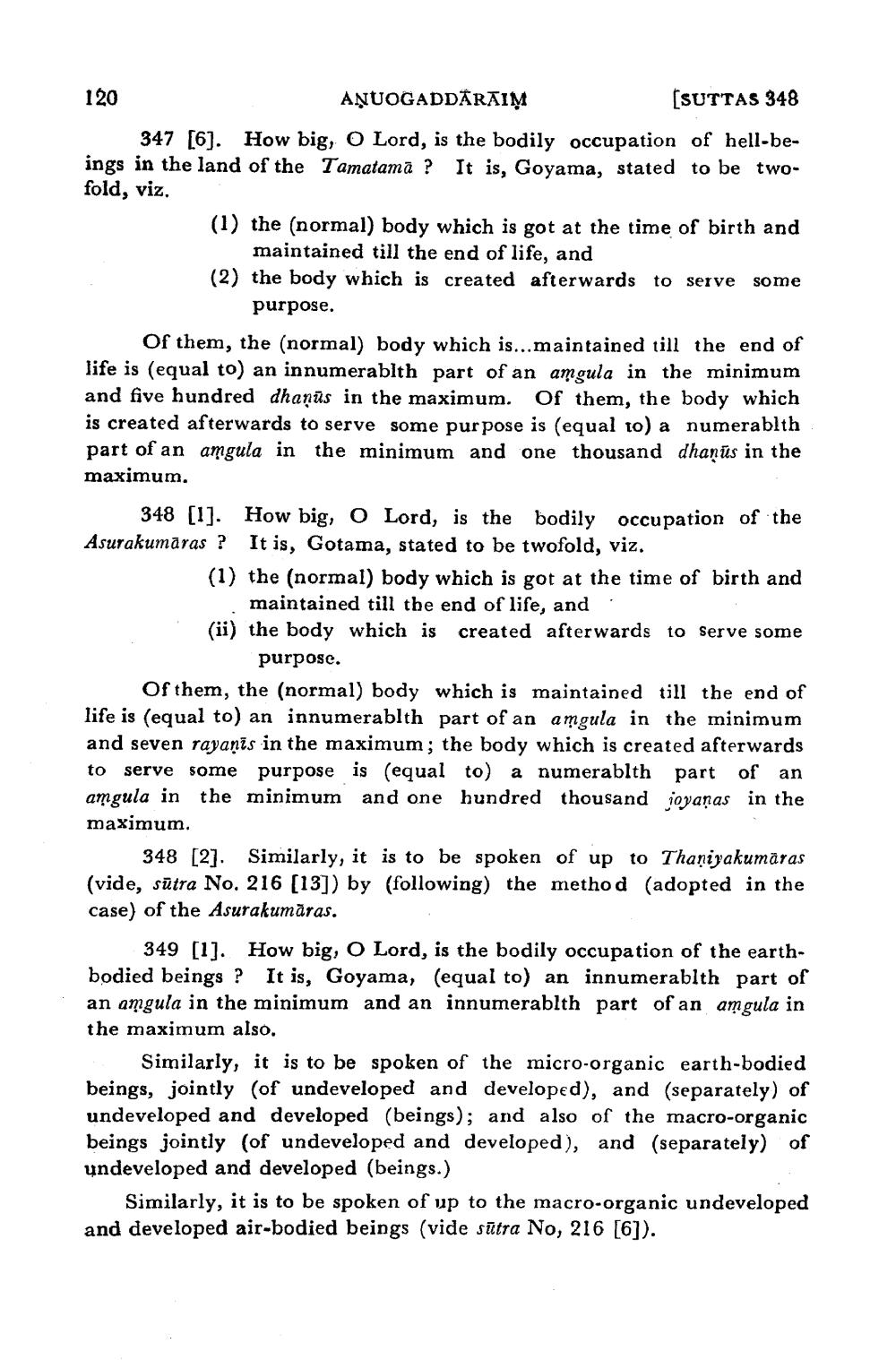________________
120
AŅUOGADDĀRĀIM
(SUTTAS 348
347 [6]. How big, O Lord, is the bodily occupation of hell-beings in the land of the Tamatama ? It is, Goyama, stated to be twofold, viz.
(1) the (normal) body which is got at the time of birth and
maintained till the end of life, and (2) the body which is created afterwards
purpose.
Of them, the (normal) body which is... maintained till the end of life is (equal to) an innumerablth part of an amgula in the minimum and five hundred dhanūs in the maximum. Of them, the body which is created afterwards to serve some purpose is equal to) a numerablth part of an amgula in the minimum and one thousand dhanus in the maximum.
348 [1]. How big, O Lord, is the bodily occupation of the Asurakumāras ? It is, Gotama, stated to be twofold, viz.
(1) the (normal) body which is got at the time of birth and
maintained till the end of life, and. the body which is created afterwards to serve some
purpose. Of them, the (normal) body which is maintained till the end of life is (equal to) an innumerablth part of an amgula in the minimum and seven rayanis in the maximum; the body which is created afterwards to serve some purpose is equal to) a numerablth part of an amgula in the minimum and one hundred thousand oyanas in the maximum.
348 [2]. Similarly, it is to be spoken of up to Thaniyakumāras (vide, sūtra No. 216 [13]) by (following) the method (adopted in the case) of the Asurakumāras.
349 [1]. How big, O Lord, is the bodily occupation of the earthbodied beings ? It is, Goyama, (equal to) an innumerablth part of an amgula in the minimum and an innumerablth part of an am gula in the maximum also.
Similarly, it is to be spoken of the micro-organic earth-bodied beings, jointly (of undeveloped and developed), and (separately) of undeveloped and developed (beings); and also of the macro-organic beings jointly (of undeveloped and developed), and separately) of undeveloped and developed (beings.)
Similarly, it is to be spoken of up to the macro-organic undeveloped and developed air-bodied beings (vide sutra No, 216 [6]).




